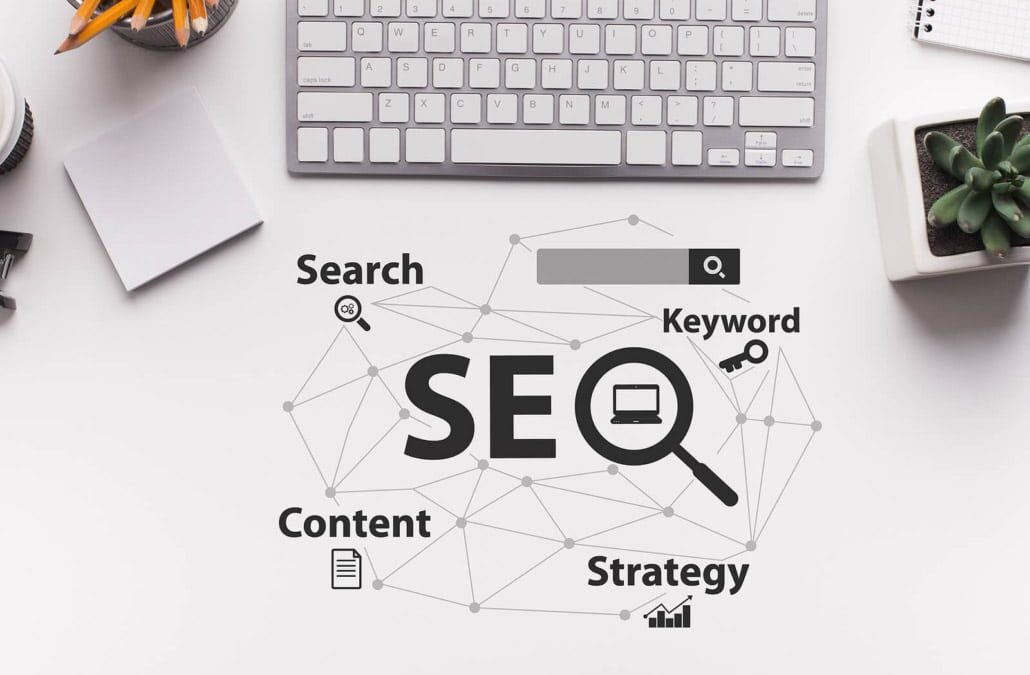Did you know that 43% of all eCommerce traffic stems from organic Google search results?1 Nearly half of online shoppers begin their customer journey with a search engine, and another 68% head straight to Google when searching for a specific product.2 Search engines have become the ultimate digital product directory for online consumers — but eCommerce brands must learn how to control the direction of traffic. Fortunately, search engine optimization (SEO) can help.
SEO is the process of fine-tuning your website content such that various web pages rank organically on search engines like Google. Unlike paid marketing, the purpose of SEO is to earn placements on search engines for relevant search terms, so you don’t have to pay each time a user clicks on an organic link. On-page SEO for eCommerce, in particular, is a fantastic method to enable products to rank organically on search engines, drive unpaid traffic to your site, and enhance brand awareness.
On-page SEO for eCommerce encompasses everything from keyword and competitor research to metadata and schema optimizations. At a time when the average online shopper browses 32 pages of an eCommerce website before making a purchase3, it’s never been more important to harness on-page SEO for eCommerce brands. Here are the eight steps to develop an effective on-page SEO strategy for eCommerce, along with five tips to succeed across search engines.
Developing an On-Page SEO Strategy for eCommerce
Search engine optimization has three components: on-page SEO, off-page SEO, and technical SEO. This article focuses primarily on on-page SEO or the optimization of various ranking factors for content published directly on your website. For eCommerce SEO, these ranking factors include the keywords and meta details used throughout product and category pages.
Consider these eight steps when looking to create an on-page SEO strategy for eCommerce.
Step 1. Conduct an SEO Content Audit
A thorough content audit is the first step in any digital content strategy, especially an eCommerce strategy. A content audit is a systematic analysis of every page on your website. For example, an SEO content audit helps eCommerce brands understand each current web page’s present strengths and weaknesses to better identify any present challenges or points of friction on the site.
To conduct an SEO content audit, start by reviewing your eCommerce website’s Google Search Console (GSC) and Google Analytics data. How many organic users are you driving to your site with your web pages? Which product or category pages are the most popular and have driven conversions? These high-performing pages will be the initial focus of on-page SEO for eCommerce.
Next, leverage an SEO site audit tool (such as Screaming Frog) to crawl the entirety of your eCommerce website. An SEO tool will reveal existing issues within on-page content — such as current metadata, URL structure, and even word count — that you will need to address with your on-page SEO strategy. For example, an on-page SEO content audit should reveal if each page has the following:
- One H1 tag that includes a target keyword(s) and is under 70 characters
- Meta title that is 55 to 60 characters long and includes the target keyword(s)
- Meta description that is 150 to 155 characters and includes a call-to-action (CTA)
- Sufficient word count so as not to be denoted as ‘thin content’
- URL that includes the target keyword(s)
Once you have thoroughly audited your eCommerce site, create a list of pages that do not meet the above requirements. Too many pages to keep everything organized? Start with the top 50 pages that drive the most organic traffic and build from there. You can also consider pages with many impressions but few clicks, as slight adjustments can significantly impact these pages.

Step 2. Develop a Keyword Map
The next step to create an on-page SEO strategy for eCommerce is to develop a keyword map. A keyword map pairs valuable search queries found via keyword research with relevant pages on your eCommerce website. There are several ways to organize a keyword map for eCommerce, but the simplest is into three topic buckets: Product Pages, Category Pages, and Informational Pages (blogs, resources, about, contact, etc.).
When conducting keyword research, use a research tool like Google Keyword Planner or Semrush to first identify relevant keywords with the most search volume, such as ‘chunky knit sweater’ or ‘women’s hiking boots.’ Then, as you locate popular keywords for each bucket, be sure to consider the intent behind them. There are three main types of search intent that can be attached to a specific keyword:
- Commercial intent. The user knows they want to purchase something but would prefer to do more research first.
- Informational intent. The user has a specific question or wants to know more about a particular topic.
- Navigational intent. The user wants to navigate a specific brand’s website.
When searching for keywords for your product and collection pages, you want to ensure the keywords you choose to have commercial intent rather than navigational or informational. To determine intent, type a keyword in a search engine or keyword research tool. What pages come up when you search? If product pages come up, this keyword should most likely be used on a product page. If collection or blog pages come up, pair that keyword with those pages respectively.
You may discover that specific keywords you assumed would fit a collection or product page are better suited for blog content. Take ‘socks for dress shoes,’ for example. At first glance, you may think this would be a good keyword for a collection page. However, a quick Google search reveals this term populates blog results. So, rather than go against the intent, create a blog page instead of a collection page for this term and find a term with more commercial intent for your collection page.
- Find more details on keyword mapping in step 4.
Step 3. Compile Research on Competitors
Now that you’ve created topic buckets for Product Pages, Category Pages, and Informational Pages, it’s time to compile research on competitors. If you’re curious about what your competitors have to do with on-page SEO for eCommerce, the short answer is everything! Your competitors likely own the websites that are out-performing and out-ranking yours on search engine results pages (SERPs).
That said, competitor analysis can reveal significant opportunities to enhance your on-page SEO for eCommerce. For instance, looking at your competitors’ keywords can help you make minor but influential adjustments to your keyword map. In addition, you may discover keywords you had never even thought of using or find different ways to organize your eCommerce site and potential categories.
One of the best eCommerce SEO tips is to leverage competitor research to conduct a keyword gap analysis. A keyword gap analysis is a process to uncover the valuable phrases your competitors rank highly for, which you don’t, and vice versa. When conducting a keyword gap analysis for on-page SEO, you’ll want to consider the pages and search terms generating the most traffic.
Keep this process in mind when compiling research on eCommerce competitors:
- Use an SEO tool to identify which keywords currently rank for your competitors.
- Highlight any search terms you have not included in your keyword map.
- Determine the relevancy of gap keywords to then input into relevant content buckets.
- Filter estimate your competitor’s traffic by page to learn which pages generate the most traffic.
- Take note of the specific pages driving competitor traffic, whether a particular category or blog topic and consider expanding into that niche.
Most importantly, consider the keywords that your competitors use on-page. Document the keywords used liberally throughout page headers, meta titles, and URLs, and highlight the terms that could also apply to your eCommerce business. Determine which phrases could be included in your keyword map and hang onto top-ranking keywords shortly in step five.
Step 4. Address Keyword Cannibalization
Before you can continue work with on-page SEO for eCommerce, you’ll need to address keyword cannibalization. Keyword cannibalization occurs when a website has more than one page targeting the same keyword and search intent. The additional pages impact the original page’s ability to rank; ultimately, none of the pages will perform as well as they should on SERPs.
Fortunately, there are tactics to remedy keyword cannibalization on an eCommerce site.
First, use one of three methods to identify potential cannibalization. One method is via Google Search Console. Toggle to the Performance Report and scroll through the list of queries earning impressions and clicks. Next, use the Pages Tab to view the list of URLs that rank for each query. If multiple URLs are populating for a single query, you may have a case of keyword cannibalization.
A second method to pinpoint keyword cannibalization is via the ‘site:[domain] keyword’ search operator directly on Google. This SERP retrieves a list of pages that are deemed relevant and optimized for a specific keyword. Third, if you already have access to paid SEO software like Semrush, you can use the Position Tracking tool to monitor potential cannibalization.
The good news is, if you have multiple pages ranking for the same keyword, you should be able to separate them one way or another:
- Redirecting. If your eCommerce website has multiple pages targeting the same keyword and intent, but you only need to keep one live, place 301 redirects to the most vital page.
- Updating the keyword target. If product variations create cannibalization issues, re-optimize at the metadata level to indicate keyword specificity.
- Adding keyword modifiers. If your website is repeatedly targeting broad queries, add modifiers (like ‘best’ or ‘cheap’) to your core keywords to make them more specific.
To round out this step, take a final look at your keyword map to ensure you haven’t inadvertently created opportunities for cannibalization. Your keyword map should assign unique keywords to each page, so confirm the same keyword never appears twice in your strategy. Of course, it’s okay to have variations of the same keyword; just pay close attention to the specified search intent.

Step 5. Optimize Metadata, Header Tags, and Alt-Text
You’re officially halfway through a complete on-page SEO strategy for eCommerce! At this stage, you should have a clear keyword map with unique keywords with the proper intent for each web page. You have already adjusted to accommodate the competitive landscape and any cannibalization issues you discovered. Now, you can finally begin implementing changes.
Regarding on-page SEO for eCommerce, the first content elements to apply updates to are the metadata, header tags, and alt-text. It’s always wise to treat these elements as three separate tasks. In our experience as a full-service digital marketing agency, it is considerably easier to stay focused on updating all of the metadata and moving on to headers than updating page by page.
Here are the considerations to adhere to as you implement on-page SEO for eCommerce:
1. Metadata
Metadata refers to the structural and descriptive details included with a piece of content to provide context for search engines. On the back end of an eCommerce website, metadata looks like crawlable snippets of HTML code for search engines to understand the purpose of a web page. For an online shopper, metadata appears as the meta title and meta description on SERPs.
Meta titles should always be below 60 characters and include the target keyword. If you plan to optimize several meta titles, it can be helpful to develop a template, such as [product name] | [brand name]. Then, continuously optimize the main title tag with the primary keyword for that webpage.
Meta descriptions should always be between 150 and 155 characters and include a compelling call-to-action (CTA). While meta descriptions do not influence organic rankings directly, they can dramatically affect click-through rate (CTR), as they can grab an online shopper’s attention.
2. Header Tags
Header tags are the text that separates headings and subheadings on a page. Also referred to as heading tags, they rank in order of importance from H1 as a title down to H6 as a subsection. Header tags significantly improve the readability of a webpage, as they clearly outline the structure and subject matter of a webpage to readers and search engine crawlers alike.
Header tags should always be below 70 characters. Your eCommerce website should feature one H1 per page, typically the specific product or category title. Each H1 should include your target keyword for the page within it. To enhance on-page SEO for eCommerce further, you can sprinkle additional target terms throughout other headers, like H2s and H3s, wherever it fits naturally.
3. Alt-text
Alt-text is the written copy that populates in place of a web image if the image fails to load. Commonly referred to as alt tags and alt descriptions, alt text is also what’s read aloud to web visitors who use a screen reader. They’re a key component of website accessibility to provide context for an image in an alternative text-based format to those with visibility issues and provide additional context to search engines regarding the relevance of each photo.
Alt-text should always describe the corresponding image as accurately as possible in under 100 characters. When organic, alt-text can also include the target keyword. For instance, if a picture of a pink sweater is placed on the sweater category page, you can use those target terms in the alt-text.
Step 6. Create Helpful Category Page Content
After updating the metadata, header tags, and alt-text for your eCommerce site, you can move to actual content optimizations. On-page SEO for eCommerce is primarily split between content into Product Pages, Category Pages, and Informational Pages. Therefore, your category content is the most straightforward place to begin optimizations that can significantly influence ranking potential.
There are two main types of eCommerce category pages:
- Category listing pages (CLP) predominantly list categories.
- Product listing pages (PLP) predominantly list products.
CLP and PLP pages should include one optimized H1, a minimum of one section under the H1 with relevant copy, a paginated list of products, and navigation options to filter products. Such elements help online shoppers discover your products, but they also provide information architecture (IA) to help search engines navigate and rank your eCommerce website.
However, these elements alone do not create a beneficial category page.
When eCommerce category pages have no content beyond product links and a meager introductory paragraph, it’s difficult for search engines to rank them for particular keywords, making these pages difficult for online shoppers to find. Therefore, it is imperative to add helpful category page content that helps search engines and consumers understand you’re the top choice.
Helpful category page content can take the shape of:
- A structured Frequently Asked Questions (FAQ) section that includes relevant keywords.
- A content block that includes H2s and H3s to visually separate content.
- A testimonials or review section that includes specific category phrases.
Step 7. Optimize Product Titles and Descriptions
Once you’ve updated all category pages with relevant and helpful information, optimizing individual product pages and product descriptions is the next step in the on-page seo for Ecommerce process. A key area to focus on with product pages is the product title. You may have already adjusted the product titles on your eCommerce store in step 5, as product titles are usually (and should be) the H1 header on the page. However, if you did not, this is the time to ensure all product titles are H1s and include the target keyword.
From here, the most critical aspect of product page SEO is the product description. Take time to add helpful information to your product descriptions. In particular, help online shoppers understand what your product is, how it could benefit them, and the pain points it addresses. Try to weave in your target keywords throughout the product description where they fit naturally.
Best practices for well-optimized product descriptions include:
- Add keyword modifiers to accommodate how consumers are searching for the product.
- Highlight benefits, not just features to describe the value of your product.
- Refer to a buyer persona to succinctly address relevant pain points.
- Proactively address common concerns directly in the description.
- Use bullet points to make your descriptions scannable.
Step 8. Support Pages with Internal Links
The final step to developing on-page SEO for eCommerce is to support your optimized pages with internal links. An internal link refers to any link from one page on your eCommerce site to another page on your site. Each internal link is made up of two components:
- The HTML hyperlink or the actual destination for the link.
- The anchor text or the visible and clickable text.
As a general rule of thumb, anchor text should be as close to the target keyword of the linked page as possible. Effective anchor text helps site visitors and search engines easily navigate your eCommerce website. In addition, internal links improve site discoverability and establish a hierarchy or more advanced structure on your eCommerce store.
After you have made various updates to your website content, crawl your site one more time to check the internal links for each page. The anchor text used should match the page’s target keywords. If not, make it a priority to change the anchor text throughout your website. This can be a long and tedious process; fortunately, there are plugins that can help.
5 On-Page Tips for eCommerce SEO Success
Nearly a quarter of all eCommerce orders are directly linked to organic traffic.4 There has never been so much competition, nor opportunities for success, as there are right now across the eCommerce landscape. So as you polish your on-page SEO strategy, consider these five tips for success.
1. Start a Blog
At first glance, a blog may seem counterintuitive for an eCommerce brand. If you’re trying to sell products, what’s the point of writing blog posts? SEO blog writing has been shown to drive brand awareness, increase traffic, and build revenue for eCommerce brands. Brand websites with blogs have 97% more internal links, significantly boosting SEO performance.5
At Bullseye Strategy, we recommend every eCommerce business maintain a blog they post on at least one to two times per month to enhance internal linking and support on-page optimizations. If you are unsure where to start, return to your original keyword research. You likely came across queries with informational intent, while keyword mapping makes for ideal blog post topics.
2. Enhance the User Experience
The user experience (UX) is paramount for a successful eCommerce business. For example, no online shopper wants to spend several minutes searching your website for a specific category, nor do they want to wait for a product page to load. This is where several elements of technical SEO, a complement to on-page SEO, come into play. An essential eCommerce SEO checklist to enhance UX includes:
- Accelerate general site speed
- Address broken links (404 errors)
- Assess if your website is mobile-friendly
- Analyze the formatting of the robots.txt file
These specific optimizations are more geared toward technical SEO optimizations but still have influence in the performance of on-page SEO for eCommerce websites. Either way, making these changes will enhance the usability of your eCommerce store and ensure the on-page optimizations you make have the highest potential to rank organically.
3. Get Reviews and Use Schema
It’s a no-brainer for an eCommerce brand to seek product reviews. But did you know these reviews can also benefit your on-page SEO for eCommerce? Review metadata, also known as review schema, feeds search engines a structured format to display relevant data back to online shoppers’ SERPs. So, for example, the on-page review schema markup will display gold review stars underneath product results.
These gold stars serve as a form of social proof to online shoppers that your product is well-loved and well-performing enough to land on page one of Google. Adding review schema can dramatically impact CTR for product pages and helps your link stand out on SERPs.
4. Develop Long-Tail Categories
Your on-page SEO strategy covers existing content optimizations, but what about new content? Aside from recent blog posts, one avenue of new content to explore is new long-tail categories. A long-tail keyword is a more specific phrase — and typically longer — than more commonly used keywords. As a result, these keywords get less search traffic but tend to have a higher conversion value.
A significant tip for eCommerce SEO success is to harness the conversion potential of long-tail keywords and develop long-tail categories. As the name might suggest, long-tail categories riff off parent keywords to create more specific variants that capture particular consumer demand. For instance, apparel retailers can expand categories to include colors, such as ‘navy blue cocktail dresses.’
5. Consider a Suggested Products Section
Lastly, support on-page SEO for eCommerce with a suggested products section across appropriate category pages. A recommended products section takes Step 6. Create Helpful Category Page Content with personalized shopping recommendations. This suggestion can also enhance UX, but it’s noticeably influential for organic page ranking.
For one, a suggested product section enhances internal linking efforts at the category page level. Such subcategories are relevant to the current page, indicating your site structure to search engines. Secondly, subcategories are likely to help shoppers find other pertinent categories across an eCommerce store, which can ultimately drive a higher ranking for your website.

On-Page SEO Ecommerce FAQs
What pages of my eCommerce site should I optimize first?
If you have an overwhelming number of category and product pages to optimize, consider optimizing your category pages first. Category pages are evergreen, meaning they will (most likely) never go away. On the other hand, products will go in and out of stock. Therefore, prioritizing your category pages will ensure that you always have a consistent stream of organic traffic.
What are the most important factors of Ecommerce SEO?
All three pillars of SEO need to be addressed to develop a valubale organic presence for your eCommerce website. These pillars include on-page (which we cover in this blog), off-page, and technical optimizations. We would not say one of these areas is “more important” than another, but starting with on-page optimizations is a good starting point.
Are category or product pages more important for SEO?
Both product and category pages can be highly effective in driving organic traffic. Category pages have the advantage of not going out of stock, so it is recommended that they are optimized before product pages. However, product pages have the advantage of being more granular and achieving high conversion rates, which makes them integral to on-page SEO for eCommerce.
How do you know which keywords to use for products?
The best way to know which keywords to use for products is to match the search intent and accurately describe the product. Ensure that the keywords chosen for product pages have commercial intent and populate other product pages when you use the query on Google. Likewise, take keyword volume and difficulty with a grain of salt — using keywords that accurately represent the products you sell is more important.
Get Your eCommerce On-Page Optimizations Up to Speed
Now is the time to harness organic traffic for your eCommerce site. As 43% of all eCommerce traffic continues to come from organic Google search results, the above eight-step one-page SEO strategy for eCommerce can help brands become drastically more discoverable on search engines.6
Is the thought of embarking on an SEO strategy on top of maintaining daily operations overwhelming? Bullseye Strategy can help. As the proud provider of SEO services for over a decade, we have what it takes to get your on-page optimizations up to speed.
Contact us today to get started.
Sources:
1. https://www.hubspot.com/state-of-marketing
2. https://www.statista.com/forecasts/997051/sources-of-information-about-products-in-the-us
3. https://www.statista.com/statistics/1106617/number-of-pages-seen-buying-session/
4. https://moz.com/blog/state-of-searcher-behavior-revealed
5. https://www.hubspot.com/state-of-marketing
6. https://moz.com/blog/state-of-searcher-behavior-revealed








